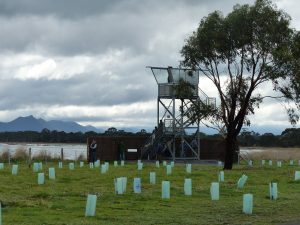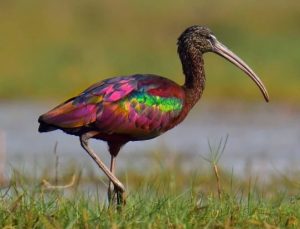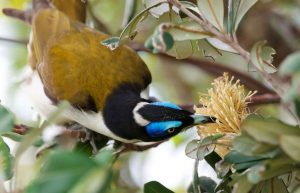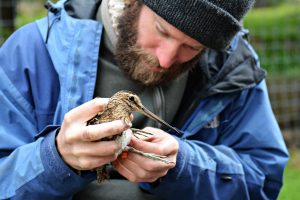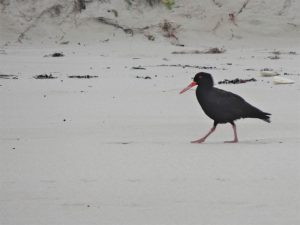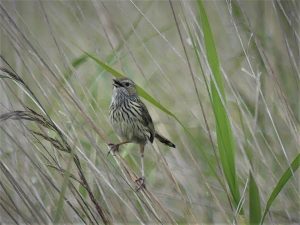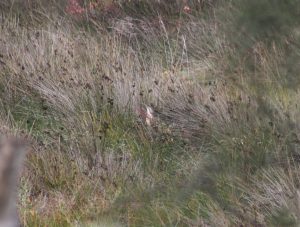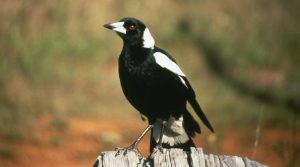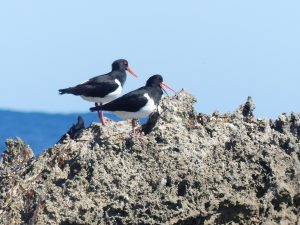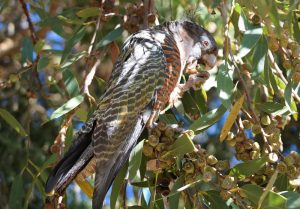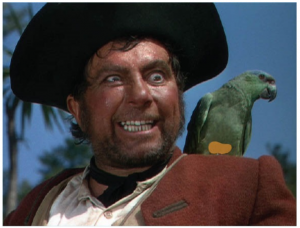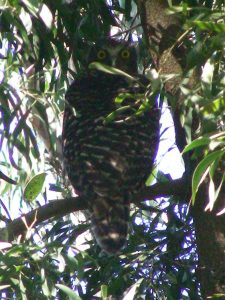For the love of birds! Celebrating National Bird Week 2019
National Bird Week, from the 21st to 27th of October, celebrates our appreciation and love of Australia’s native birds. It is also a time to be inspired to get involved in bird conservation efforts.
NGT has been involved in a wide range of bird conservation projects including:
- Orange-bellied Parrot Recovery Program
- Revegetation of food and habitat plants for Red-tailed Black Cockatoos
- Restoration of wetland habitats to support Australasian Bitterns
- Monitoring of Wedge-tailed Eagle nests
- Bird monitoring courses
- Investigating the relationship between native birds and Acacia paradoxa
Join us in celebrating our wonderful diversity of Australian birds by enjoying some of our favourites, as chosen by NGT staff and volunteers!
Glossy Ibis (Plegadis falcinellus) – Ben Taylor (Senior Ecologist, NGT)
“One of my favourite birds is the Glossy Ibis (Plegadis falcinellus). It’s always exciting to see them because they are so rare in southern Australia. When you see Glossy Ibis in a wetland it feels like a good sign, that there is something going right with the ecosystem. I love the rich chocolate-brown plumage, which has a striking iridescence when sunlight hits it from certain angles, as in this image (which I didn’t take!).”
Blue-faced Honeyeater (Entomyzon cyanotis) – Lu-Wei Spinks (Ecologist, NGT)
“The Blue-faced Honey eater is a character I grew up with in NSW and has remained one of my favourites ever since! I am always so captured by the vibrant blue around the eyes and the golden olive-green on the back and wings. They forage on the foliage, bark and limbs of trees for insects and other invertebrates, as well as fruit and nectar from native and exotic plants. In some areas it is also known as the Banana-bird as it is often found eating the fruit and flowers in banana plantations.”
Latham’s Snipe (Gallinago hardwickii) – Jodie Honan (Ecologist, NGT)
“One of my favourite birds (there are many) is Latham’s Snipe. It is a rather special migratory waterbird. Rather than hanging out in flocks where people can see it, it likes to hide during the day in long grass (which could be kikuyu!), then venture into swampy areas (even heavily grazed swampy areas) at night to eat, eat, eat! This is a photograph of my friend Richard Chamberlain and ‘T0’. T0 was the first snipe ever to be recorded doing a complete migration between Australia (Port Fairy) and the northern hemisphere (Hokkaido, Japan). You can read about this mammoth trip carrying a lightweight geolocator here. These birds have high site fidelity – they come back to the same place, even to within a few hundred metres after migrating 7,000km. Rich is one of the many volunteers who have helped out with the Latham’s Snipe Project. If you’d like to help monitor snipe in your area, check out the website.“
Sooty Oystercatcher (Haematopus fuliginosus) – Tessa Roberts (Wetland Ecologist, NGT)
“This Sooty Oystercatcher was spotted on a beach in Kangaroo Island whilst walking the ‘KI Wilderness Trail’ in 2017.
Sooty Oystercatchers like to forage on coastlines. They sometimes take their prey to an ‘anvil’, and smash the shell to eat the edible parts. I like their striking colouring, with deep black feathers, red beak and legs and a beady red eye. Sooty Oystercatchers aren’t threatened nationally, but are listed as vulnerable in NSW.”
Striated Fieldwren (Calamanthus fuliginosus) – Helen Bawden (NGT volunteer)
“This is a Striated Field Wren, taken by me at Mullins Swamp on a bird outing. He came close to where we were standing and sang his happy little song while doing his gymnastics. I thought he was lovely and quirky.”
Australasian Bittern (Botaurus poiciloptilus) – Warwick Biggs
“It is in this pic if you look carefully. I took the photo earlier this year within the Ramsar listed Glenelg River estuary.”
Australian magpie (Gymnorhina tibicen) – Deb Thompson
“My favourite bird is the Australian Magpie. They are such a familiar part of the Australian landscape. I often awake to the sound of them warbling in trees outside my bedroom window. It is such a glorious sound and a joy to hear.”
Pied Oystercatcher (Haematopus longirostris) – Helen Bawden
“They are canny parents and I have been bemused to watch a pair “see off” our group as we walked to the car about 700 metres away, after we had been close to their chicks. Such eye-catching birds, whats not to like?”
Gang Gang Cockatoo (Callocephalon fimbriatum) – Lauren Kivisalu (Ecologist, NGT)
“This beautiful parrot is a species I have only become familiar with since moving to western Victoria about eight years ago. It is a bird that I share lots of fun watching with my two sons as local flocks frequent our neighbour’s pond. The boys know the call straight away and call out ‘Gang Gangs!’, and they love counting how many they can spot amongst the eucalypt trees. The male’s vibrant red head and crest is a giveaway, but after getting closer looks at the female plumage, I think their patterning and colour palette is most striking!
Backyard birds are such a powerful icon for kids, and encourage them to start to observe, explore and connect to nature in their local environment; native birds have definitely sparked lots of curiosity and enjoyment for my kids!”
And for something a little different from John H. (NGT volunteer)
“Here is my favourite bird.
It is the unique Orange-bellied Parrot subspecies; Neophema chrysogaster buccaneer.
My ancestor Long John Silver stained the seven seas with one on his shoulder; they were inseparable.
The parrot answered to the name of Matey.
Matey’s behaviour could only be described as theatrical and his agent was a complete Bustard.
Now Long John is long gone and Matey is no more.
So in ten years of looking for the real thing, I have not seen one but heard two. Fortunately, I’m quite good at identifying birdsong; there’s nothing wrong with my buccaneering.”
And a story about Powerful Owls (Ninox strenua) by Bryan Haywood (Senior Ecologist, NGT)
“The Powerful Owl is one of my all-time favourites. An encounter with this bird over ten years ago sparked my love for spending time out in the bush at dusk searching for nocturnal birds and other nocturnal animals.
I remember Dan Harley (now works at Zoos Vic, Healesville) and I searching for them down in Caroline Forest back in 2004, Dan was an expert at nocturnal animals and mentored me on the intricacies of dusk bird and mammal surveys. Dan and I managed to find a male in Honeysuckle Native Forest Reserve this particular night, so the search was on. Could we find a pair or even a nest?
The deep double-hoot of the male resonates through the forest at dusk especially when everything is quiet. And if you are lucky to hear the higher pitched double return call of the female, then you have a pair. Listen to the recording of a male here.
When I was working with ForestrySA as a Conservation Planner, we often did trips down to the forest with schools to talk to the kids about biodiversity; and what fun we did have too! This program of biodiversity education exists today some 10 years on. On this one particular day in 2007, the Glenburnie Primary School group was asked to go off into the bush and find three things they wanted to talk about, or ask questions about and to come back after five minutes. Well, they all did but when a student (whose name I’ve momentarily forgotten) came back and said “there was this big owl sitting in a Blackwood tree back there” I said, “what? OK perhaps we should go and have a look!” It ended up being a male Powerful Owl roosting (original photo of the bird roosting in the Blackwood tree). I was going internally berserk at this point but kept my cool in front of the group and continued on our excursion. After the students left I checked out the site more thoroughly and found what looked to be a large hollow in a Manna Gum tree 20 metres away.
Dan and I dropped down to this site later that week at dusk and confirmed there was a breeding pair. How cool!! We tracked that pair for a few months waiting for the chicks to fledge and we managed to get some footage too!”

